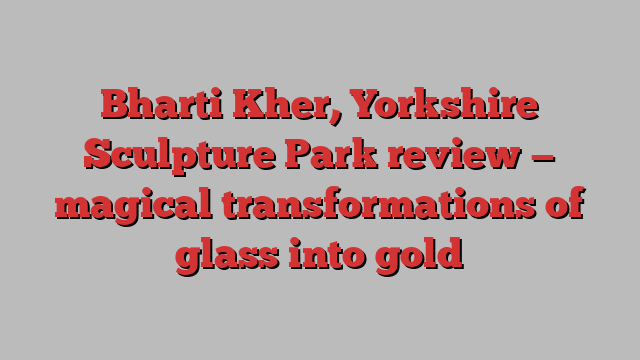
It is common practice for many an Indian woman, at the end of the night, to remove her bindi from the centre of her forehead and stick it on the bathroom mirror. The bindi is a complex symbol of femininity, historically signifying that a woman is married; it also represents the divine wisdom of the “third eye”. Some years ago, the British-Indian artist Bharti Kher became fascinated by this quiet, routine gesture, at once an act of liberation and preservation, nodding to one’s public and private selves.
It planted the seed for works such as “A poem for night creatures” (2020), in which swaths of purple, blue, mustard and cream-coloured bindis spill across the surface of a shattered and reassembled mirror. The kaleidoscopic, abstract piece riffs on superstitions around broken mirrors while evoking ecological maps and all-seeing satellite imagery. And the profusion of bindis — these additional modes of perception — also implies a kind of surveillance, proliferating eyes here blocking our own view of ourselves.
This process of transformation — from the concrete to the ethereal, the mundane to the mysterious and multidimensional — is at the heart of Kher’s practice, and the connective thread that runs through Bharti Kher: Alchemies at Yorkshire Sculpture Park. Across her work, which ranges from surreal installations to hybrid mythical beings, she is interested not just in what materials do, but how they speak. Her most interesting works manage to draw out the symbols and stories inherent in everyday items (jewellery, saris, prayer objects as well as bindis) while also skilfully metamorphosing them into something magical, strange, ineffable. The effect, as the title of the show suggests, is a kind of alchemy.
Kher’s work deepens with multiple readings: first, you’re swept away by the beauty of the images; then you might appreciate the fine technique; finally, the breadth and richness of the references come into view. Take, for instance, “The deaf room” (2001-12), which invites us to step inside a square, open-topped chamber constructed from gleaming black bricks. Inside, the bricks create a hushed, mysterious space, the walls high enough to block out the gallery beyond. The thick, roughly applied grout that holds the bricks together resembles flesh, full and spilling through the cracks.
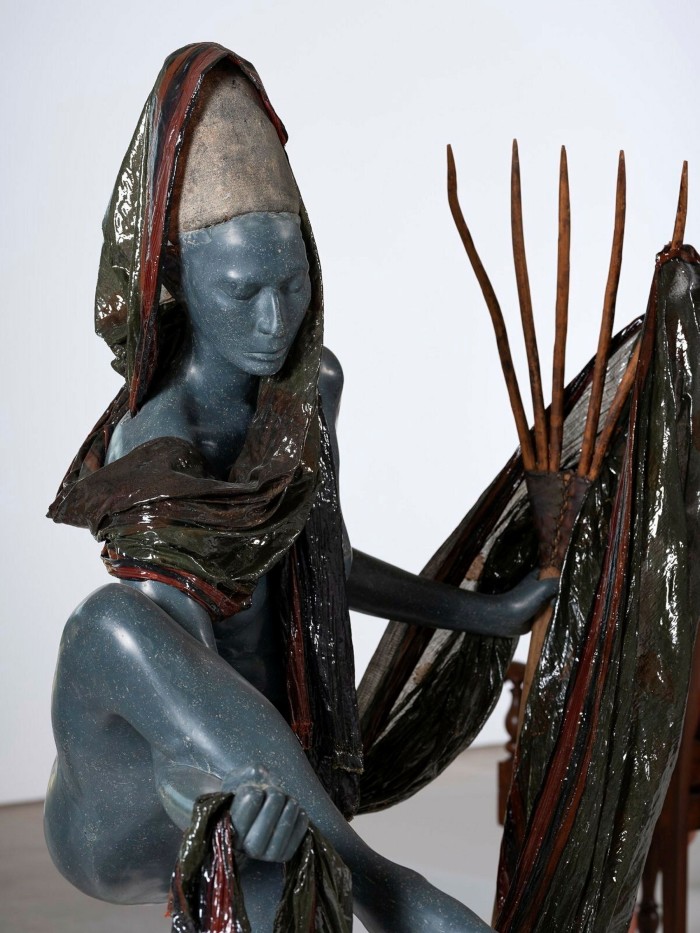
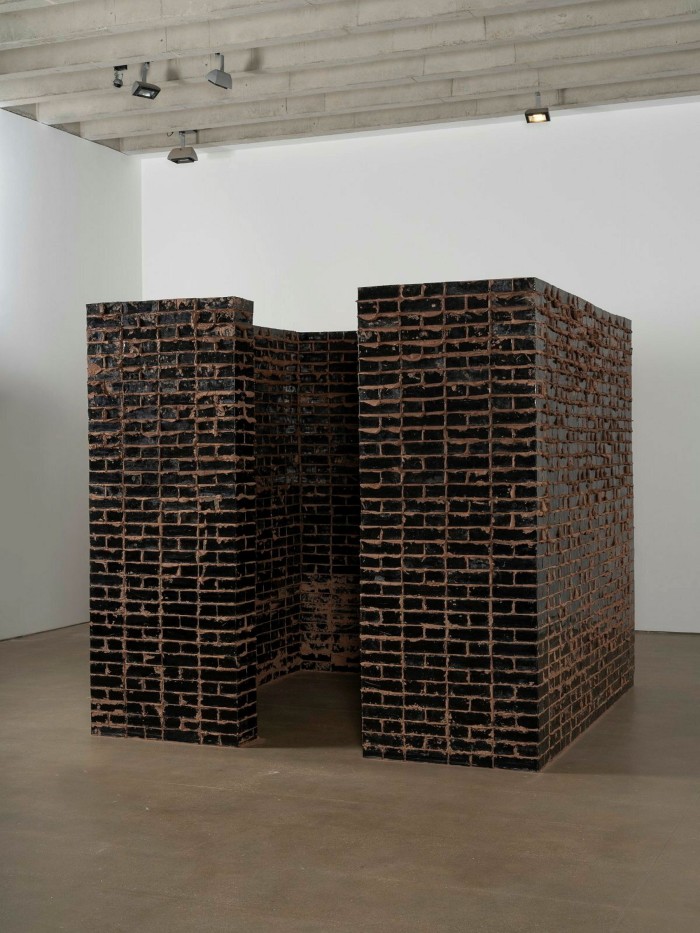
The room is at once oppressive and meditative, harsh and bodily — evocative of the material transformation that produced the work. The bricks were actually made by melting down 10 tonnes of glass bangles, worn on the wrists of women in India. Kher developed this work in response to religious riots in Gujarat in 2002, during which violence against women was widespread. The room, then, becomes a kind of memorial, the transfigured bricks embodying the presence and absence of these women; silence as well as strength.
A powerful process of material and emotional transformation is also at work in “Crushed Breathless” (2017), comprised of two blocks: one is a smooth, compressed cube of layered wax, the other a slightly irregular square of shiny, textured metal. On first look, the blocks suggest geology: layers of rock, molten lava. But the second block was once a full-size operating ambulance which had been left on a street near Kher’s studio in Delhi after a traffic accident. She saw the damaged ambulance as a kind of dying body, abandoned in purgatory, and eventually found a way to purchase it and crush it into a cube. The violently compressed metal is a harsh reminder of life’s frailty, but paired with the wax — a material that’s soft, flexible, and infinitely reusable — the sculpture becomes a metaphor for cycles of creation as well as destruction.
Indeed, fluid boundaries have long characterised Kher’s work as well as her life. Born in England in 1969 to an Indian immigrant family, Kher moved to India in her early twenties and continues to live and work in between New Delhi and London. This backdrop of cultural hybridity is on full display in the show’s largest gallery, which feels like stumbling upon a pantheistic catwalk of fantastical beasts, warrior goddesses and interspecies beings. The array of meticulously crafted, ambitious works evokes ancient Indian temple deities and Greek and Roman classical sculptures, with an edge of high fashion: many of the sculptures are draped in colourful saris that have been glazed with resin, so the soft folds of fabric become rigid and glistening, like ice.
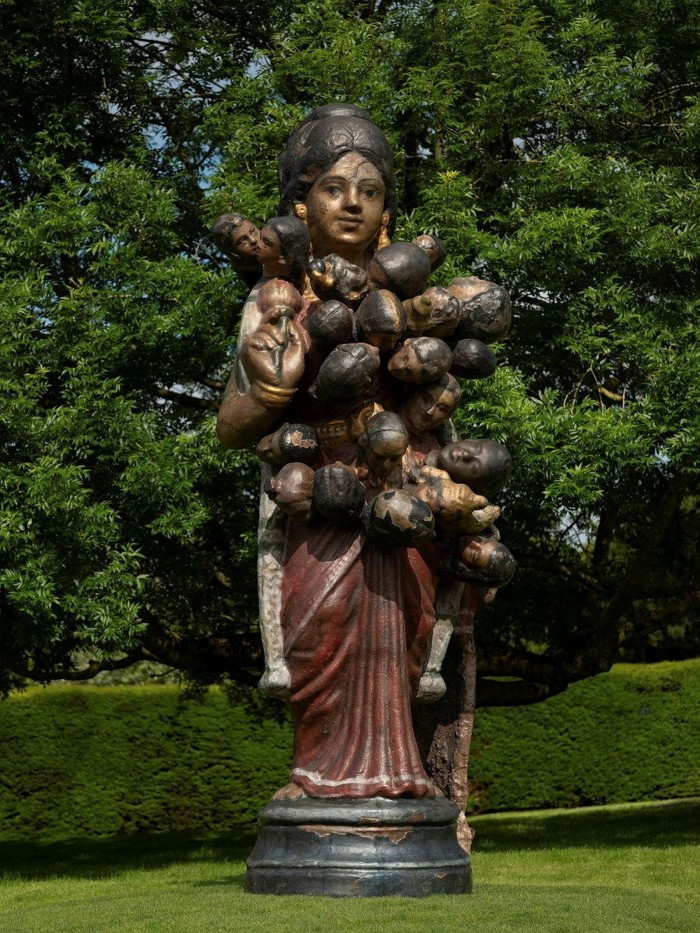
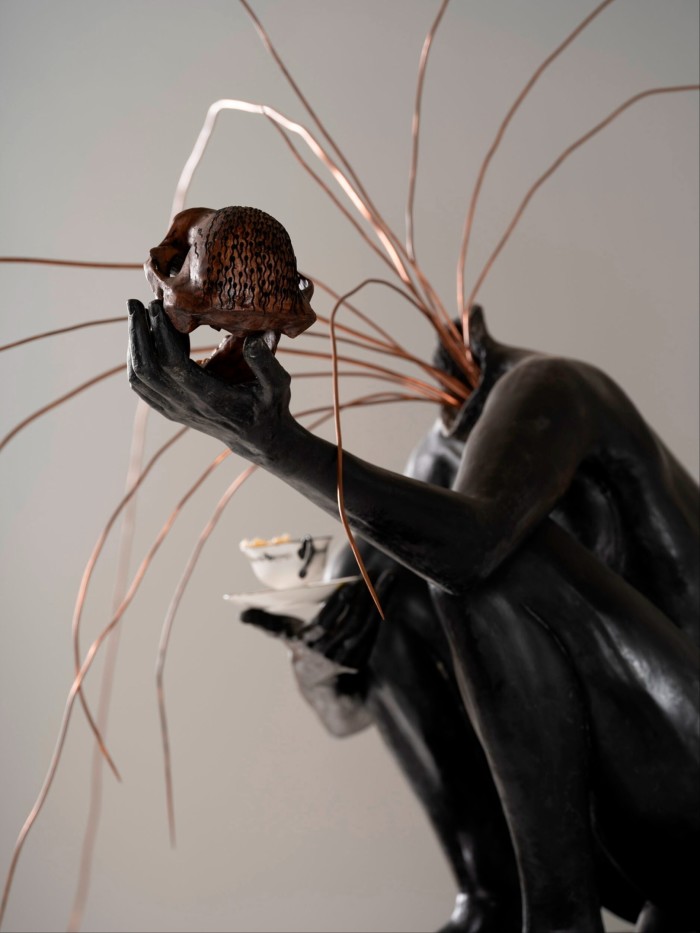
“Animus Mundi” (2018) is a large Venus de Milo-esque nude swathed in a frozen sari and balancing a large, ornately decorated cow on its head: human and animal merged to conjure the soul of the world. Elsewhere, the squatting body of a woman (“And all the while the benevolent slept”, 2008) holds a skull in her palm while wires spurt from her decapitated head; the skull is a replica of Lucy, the 3mn-year-old fossil once believed to be the oldest remnant of a human, and the body references the Hindu goddess Chinnamasta, ferocious taker and giver of life.
The physicality and craft of Kher’s practice are on full display here, but at times, she relies too heavily on symbolism. A large cube comprised of old radiators Kher shipped from America to India — titled “The hot winds that blow from the West” (2011) — aims to evoke shifting power dynamics between east and west, but the work itself feels didactic rather than revelatory, as though the base materials haven’t been properly alchemised. Similarly, a series of collaged photographs featuring part-animal, part-human women holding feather dusters, cupcakes and cuts of meat comes across as a facile critique of domesticity via dated Photoshop tricks.
Kher’s political interventions are most illuminating when focused through the visceral, hallucinatory world of her figurative sculptures. “Benazir” (2017-21) takes its name from Pakistan’s first female prime minister, who was assassinated in 2007: the work is a cast figure shrouded in layers of resin-hardened saris, which both seem to protect the body beneath as well as denoting a ghostly absence. “Mother and Child: Amar, Akbar, Anthony” (2017) features the replica skeleton of a gorilla cast in textured red resin, carrying on her back three wooden puppets holding weapons. The work refers to a 1977 film about three brothers who are separated from their mother at birth and raised respectively by Hindu, Muslim and Christian families — a potent expression of this era’s growing religious strife in India.
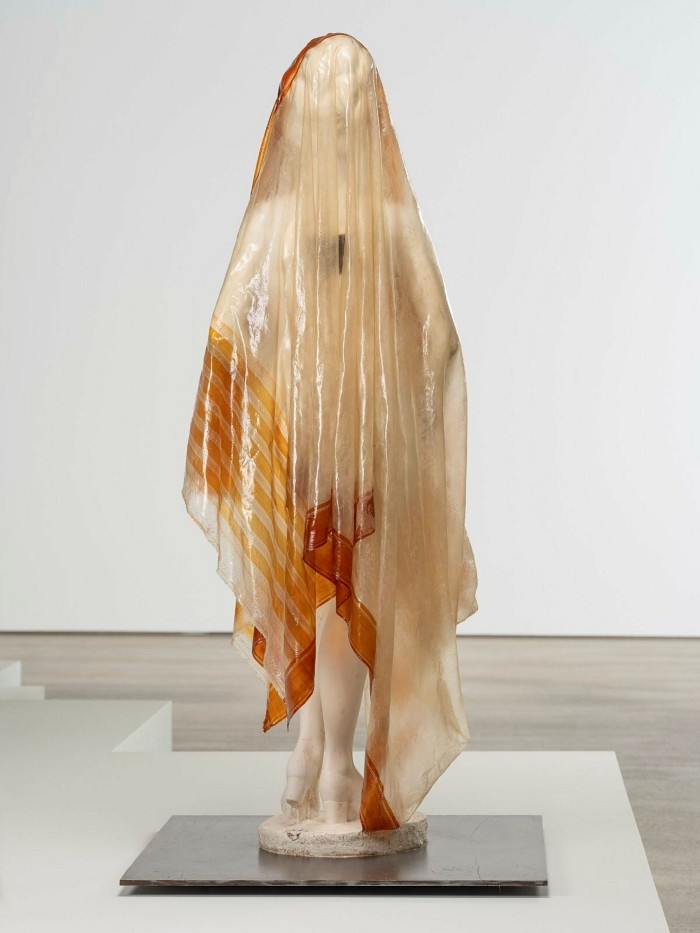
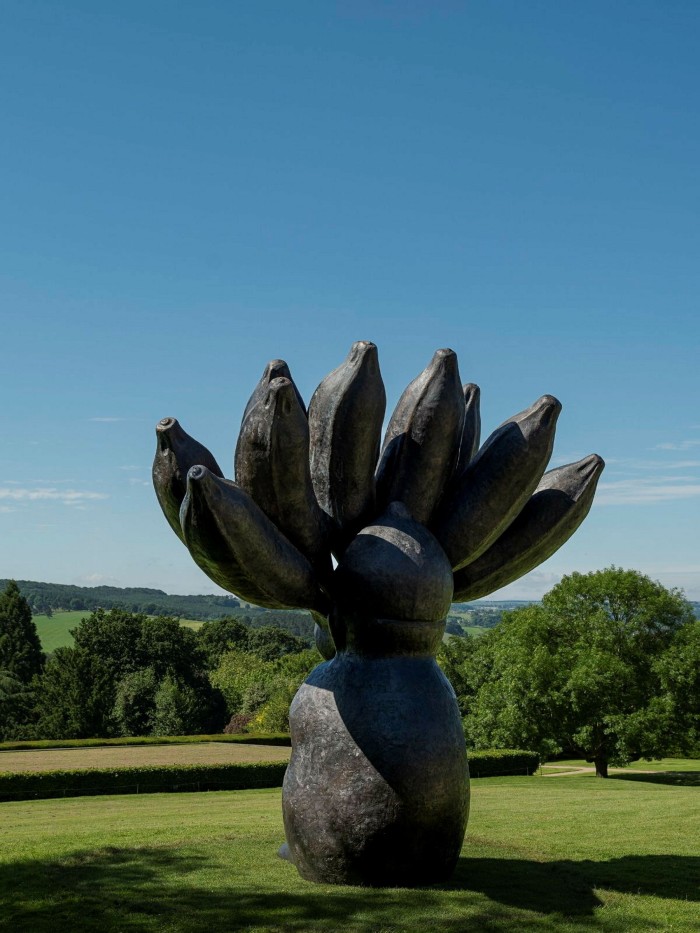
The mythic and earthly continue to collide outside the gallery walls, where a playful figure with a bunch of bananas for a head stands guard at the top of a hill. Nearby, a monumental mother-goddess bears the heads of 23 children, who bloom from her torso like Artemis’s multitudinous breasts. These bronze sculptures from Kher’s Intermediaries series riff on miniature South Indian figurines often displayed during religious festivals: scaled up to five metres high, they are a dramatic act of transformation that also imbues them with humour (honey, I blew up the kid). They loom mischievously over the green, sheep-covered hills of the Yorkshire landscape, inviting us into a world where objects contain more than meets the eye, where the supernatural is possible — where lead glass may turn to gold.
To April 27 2025, ysp.org.uk
Find out about our latest stories first — follow FTWeekend on Instagram and X, and subscribe to our podcast Life and Art wherever you listen